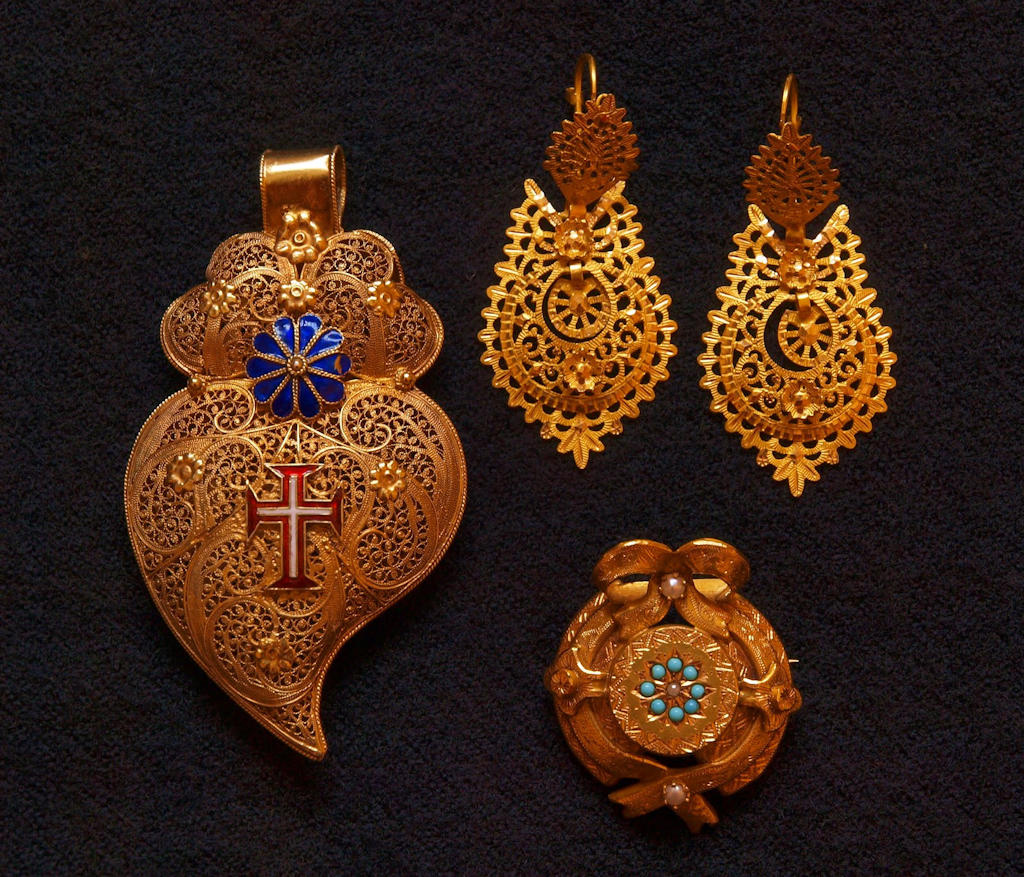At its core, filigree involves the manipulation of fine wires of gold or silver, meticulously twisted and soldered together to create delicate patterns and designs. The artistry lies in the careful balance between form and functionality, as artisans shape these intricate wires into breathtaking jewelry pieces, decorative objects, and religious artifacts.
One of the distinguishing features of Portuguese filigree is its unique combination of geometric and naturalistic motifs. Filigree pieces often incorporate symbols of nature, such as flowers, leaves, and birds, alongside intricate latticework and interlacing patterns. This blend of organic and architectural elements creates a harmonious and visually striking aesthetic.
Filigree artisans in Portugal are known for their mastery of various techniques, including openwork, granulation, and plaiting. Openwork involves creating voids within the filigree structure, adding depth and dimension to the design. Granulation, on the other hand, involves attaching tiny granules of metal to the wires, adding texture and visual interest. Plaiting, a technique unique to Portuguese filigree, involves the interweaving of wires to create braided patterns, further enhancing the complexity and richness of the design.
Portuguese filigree has long held cultural significance in the country. Traditionally, it was a symbol of social status and wealth, with intricate filigree jewelry adorning the attire of noblewomen. Today, filigree continues to be treasured as a testament to Portugal's rich artistic heritage and as a cherished symbol of national identity.
Lisbon.vip Recommends
Visitors to Portugal have the opportunity to witness the beauty of Portuguese filigree firsthand. Many jewelry shops and craft markets showcase exquisite filigree pieces, from intricate earrings and pendants to ornate brooches and bracelets. These pieces not only serve as stunning accessories but also as wearable works of art, carrying with them the legacy of centuries of craftsmanship.
In a world driven by mass production and fleeting trends, Portuguese filigree stands as a testament to the enduring value of handmade artistry and the preservation of cultural heritage. Each filigree piece tells a story, representing the skill, dedication, and creativity of the artisans who continue to breathe life into this timeless craft.
Portuguese filigree is more than just jewelry; it is a testament to the human desire to create beauty, to honor tradition, and to celebrate the rich tapestry of culture that defines Portugal. As we marvel at the intricate patterns and delicate craftsmanship of Portuguese filigree, we are reminded of the power of art to transcend time and connect us to our shared heritage.



